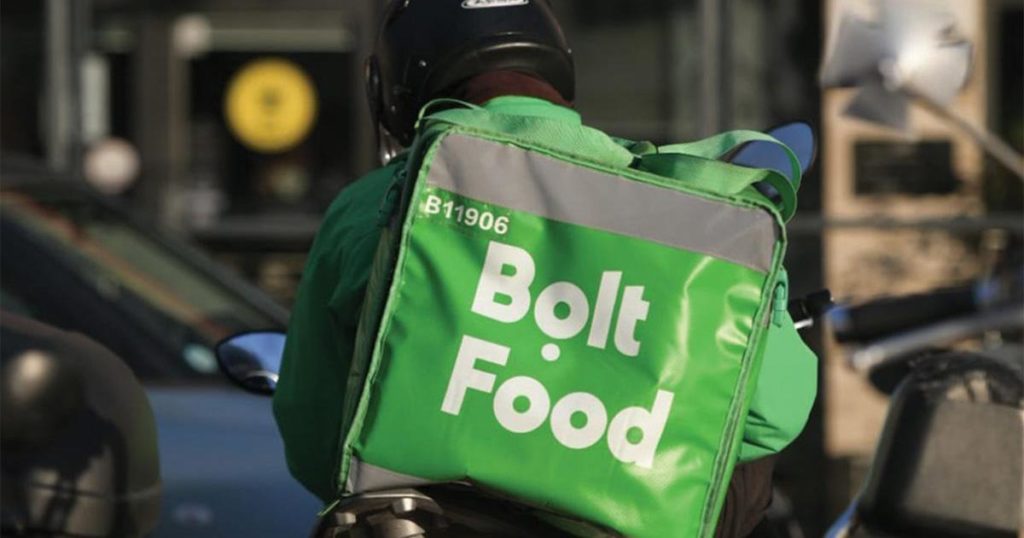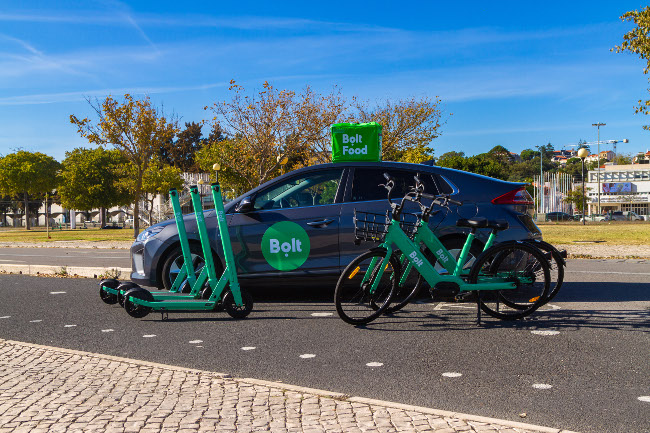In January, Bolt, one of the biggest ride-hailing startups in the world, closed a $711 million funding round led by Sequoia Capital and Fidelity and saw its valuation go up from $4.8 billion to about $8.4 billion.
The company said the new funds will be used to further improve its full suite of mobility and delivery products, and expand into new cities in Europe and Africa.
To understand Bolt’s overarching plans for Africa, its second-largest market after Europe, TechCabal spoke with its Africa Regional Director, Paddy Partridge.
Even though the company has added 2 new verticals—shared cars and scooters, and quick commerce called Bolt Market—to its product line, ride-hailing and food delivery services are the only products available in Africa. Rather than launch all its verticals in African cities, the company wants to continue ramping up more users for its ride-hailing and food delivery products—at least for this year, as it introduces them to more African cities.
Expansion while meeting demands
According to Partridge, the company is doubling down on its expansion plan in the North Africa region, as it currently only operates in Tunisia. Partridge also mentioned that more West African cities have been earmarked for expansion. However, expansion means more demands, and the company, like other players in the sector, is currently struggling to meet up.
Today, the company boasts of over 40 million customers—that’s about 40% of its total users base—and over 700,000 drivers in about 90 cities across 8 countries on the continent. A rough calculation puts the driver-to-rider ratio at 1:570. This is reported to be the reason for the occasional surge in trip prices, like the one observed in December last year. Prices had to be increased to attract more drivers to sign up and fill up the order.
Going forward, more drivers will be onboarded, so a surge in price wouldn’t be the solution to meeting high demand. But the problem here is the lack of access to vehicles: thousands of drivers are willing to get on Bolt but don’t own or have access to a vehicle to work with.
“This is a major challenge, and to solve it, we’re now doing several partnerships on the vehicle financing side,” Partridge told TechCabal.
The company, which has a standing partnership with Nigeria’s Sterling bank, has added Nigeria’s MAX.ng, a logistics and vehicular asset financing startup, to the list of partners to provide financing for 10,000 affordable vehicles to their drivers. The company is also in partnership with FlexClub, a vehicle financing marketplace, to serve its drivers in South Africa.
“Hopefully, it’ll mean less surging, which I know is a challenge in the Nigerian market. And it’ll mean that we can keep up with the growing demand,” Partridge said.
Transitioning to electronic mobility
Electric mobility is the new trend, and every environment-conscious company is embracing the development. In Europe, Bolt says its fleets are filled with electric vehicles (EVs) and, as a result, all trips are carbon-neutral. Bolt’s Green Plan is created to reduce its global ecological footprint. It says its e-scooters are all charged with 100% green energy and made from 100% recyclable materials. The company has begun to replicate that in Africa and is also planning to optimise for green this year.

“Last year, we introduced the green category in Nairobi. We also rolled out EVs for ride-hailing and food delivery in several markets. This year, we really want to start accelerating that,” said Partridge. “This is important for two reasons: it is better for the environment and more profitable to drivers, particularly as fuel prices go up so rapidly.”
As sweet as this development sounds, Partridge, unsurprisingly, said there is currently no plan to implement EVs in Nigeria. It’s actually a no-brainer because Nigeria hasn’t done a lot in the EV sector; there is no infrastructure to support EVs and, compared to other markets, they are not a wise economic option. This means MAX.ng, Bolt’s financing partner, won’t be extending EVs in its home country like it has done in other markets it operates in—such as Egypt. “The main focus areas at this stage are really Kenya and South Africa.”
Extensive driver education and verification
Six years ago in 2016—about 3 years after it was founded in Estonia—Bolt made its first foray into Africa when it launched in South Africa. It quickly expanded into Kenya, Ghana, and Nigeria, and within 4 years, displaced Uber, its biggest competitor, to become the biggest ride-hailing platform in Africa.
But with huge growth comes equal responsibilities and challenges. Bolt’s success in Africa came with a price. The startup has gone through an odd collection of good, bad, and ugly reviews from its African customers. Riders have reported being harassed by Bolt’s drivers. For instance, during Nigeria’s #ENDSARs protests, some Nigerians took to social media to complain and rant about how Bolt’s drivers were delivering young people to the police. And this is one of many unpleasant experiences with the service.
To solve the problem, Partridge said the company is investing in building a more efficient verification system that will weed out bad players and shoot up the security rating of the platform. Though the process varies from market to market, depending on regulatory requirements, Bolt currently onboards drivers by checking identification and running criminal background checks.
The issue of onboarding only qualified well-behaved drivers on the platform may be a hard nut to crack because, when Bolt newly entered the African market, it was reported that the platform relaxed its entry requirement to snag market share from Uber—a strategy that worked at the time but continues to haunt and hurt the brand today.
“So, we have a new sort of quality management system that basically tracks different metrics and gives drivers more actionable feedback on how to improve their behavior on the platform,” Partridge said. He also mentioned that Bolt is improving on their driver education programme, both online and offline.
A safe space for women
It’s said that women feel safer with other women than with men. This means that Bolt must onboard more female drivers. According to the African director, Bolt is looking to bring more women drivers onto the platform.
“At the moment, across Africa, women make up a very small share of our driver base. But we see quite a big opportunity to get more of them into ride-hailing. And in South Africa and Kenya, we’ve now launched women-only categories.”
The women-only category is a feature that allows women to choose their rider to be a woman. “This is basically a way to give women a bit more trust on the platform, where they can choose if they want to pair with a woman rider.” Similarly, women drivers, if they want to be paired with a woman rider, can choose that.
One could have sworn that the women’s category would be rolled out in Nigeria immediately, given the many complaints from Nigerian women about harassment from male Bolt drivers. But that hasn’t happened because, according to Patridge, South Africa and Kenya have the highest share of female drivers—which is an essential metric in rolling out the feature.
“It was most feasible to get the category off the ground in South Africa. We wanted to test what kind of traction the category could get, and South Africa is the most suitable pilot test. For us to provide women riders with a category that makes sense, we need to have a certain volume of female drivers in the first place.”











